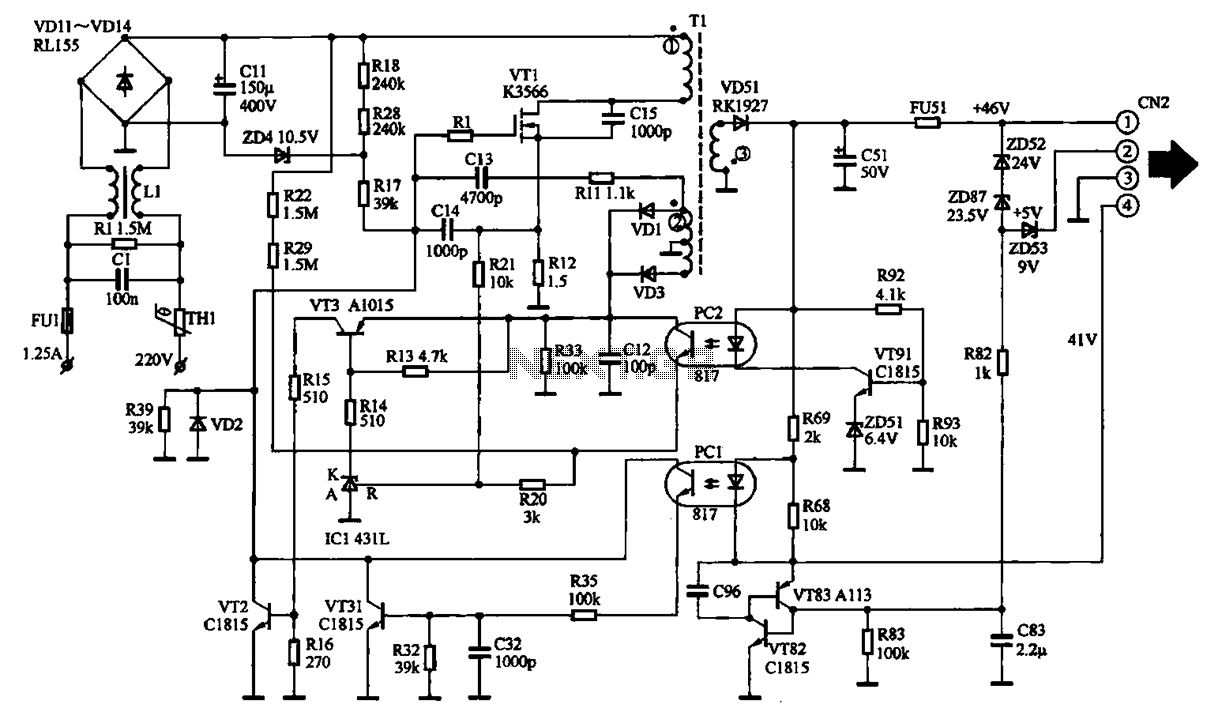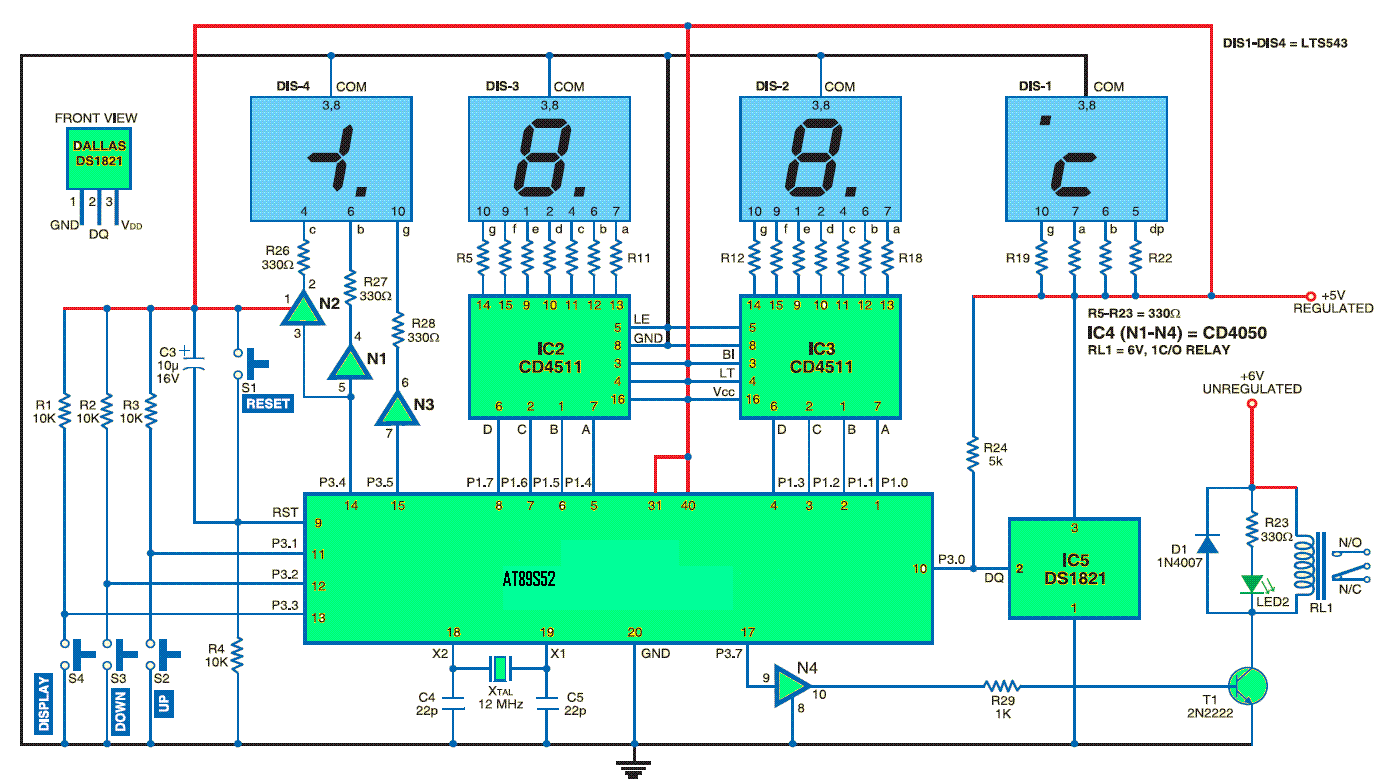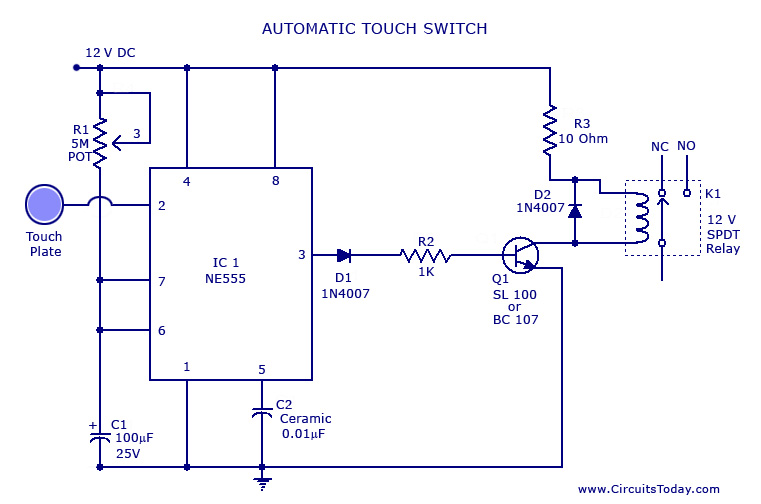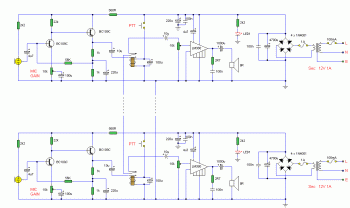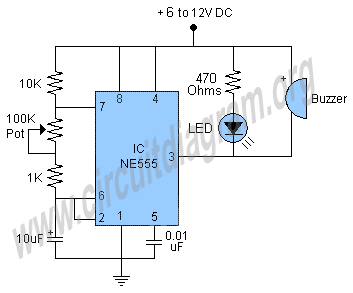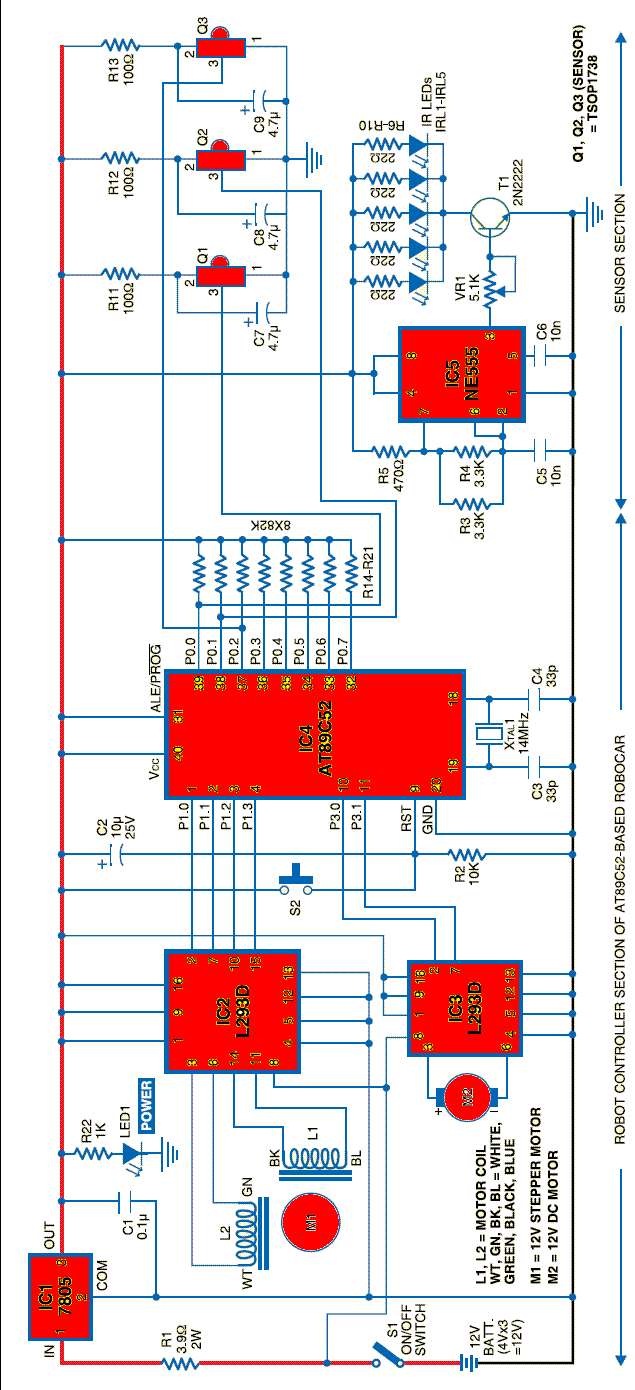
Light dimmer circuit using DIAC and TRIAC
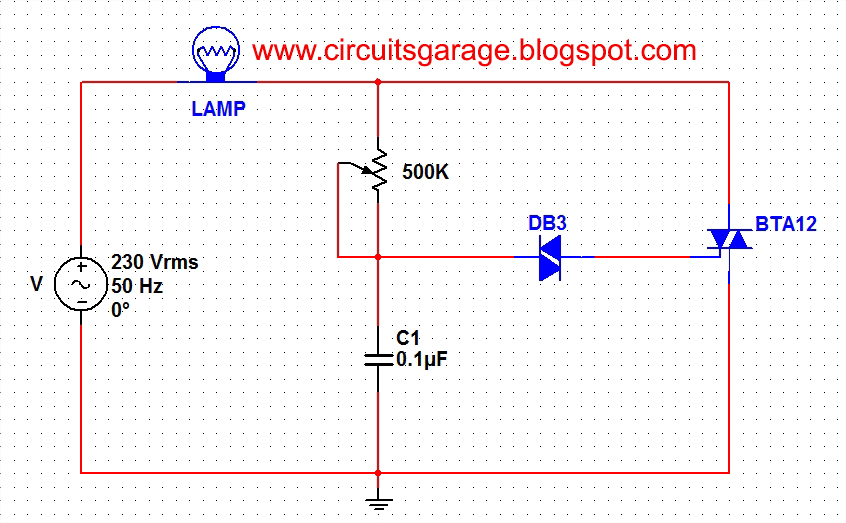
A light dimmer circuit is used to adjust the illumination of a lamp. The following circuit illustrates a basic TRIAC triggering circuit that utilizes a DIAC. In this circuit, the illumination of the light is regulated through the interaction of the TRIAC and DIAC. A resistor and capacitor are connected in series, allowing the capacitor to charge through a 500K resistor. As the capacitor charges and reaches the breakover voltage of the DIAC, it begins to conduct. Consequently, the voltage across the capacitor is applied to the gate of the TRIAC, turning it on. The charging of the capacitor can be adjusted by a variable resistor, which indirectly modifies the firing delay of the TRIAC.
The light dimmer circuit employs a TRIAC (Triode for Alternating Current) as the primary switching device, which allows for control of AC power to the lamp. The DIAC (Diode for Alternating Current) serves as a triggering element that enables the TRIAC to turn on when the voltage across it exceeds a certain threshold, known as the breakover voltage.
In this configuration, the resistor and capacitor form an RC timing circuit. The resistor, valued at 500K ohms, limits the current flowing into the capacitor, controlling its charge time. The variable resistor, often referred to as a potentiometer, allows for fine-tuning of the resistance value, thereby adjusting the time it takes for the capacitor to charge to the DIAC's breakover voltage.
When the capacitor reaches the breakover voltage, the DIAC transitions from a non-conducting to a conducting state, effectively providing a pulse to the gate of the TRIAC. This pulse triggers the TRIAC, allowing current to flow through the lamp, thus illuminating it. The phase angle at which the TRIAC is triggered determines the brightness of the lamp; a later trigger results in a dimmer light output.
The circuit can be designed to operate with various types of lamps, including incandescent and some types of LED lamps, depending on the specifications of the TRIAC and DIAC used. Proper selection of these components is crucial for ensuring reliable operation and achieving the desired dimming effect. Additionally, incorporating snubber circuits may be necessary to protect the TRIAC from voltage spikes that could occur during operation, especially with inductive loads.
Overall, the described light dimmer circuit provides an effective means of controlling light intensity through simple components and straightforward design principles.Light dimmer circuit is using to adjust the illumination of lamp. The below circuit shows the basic TRIAC triggering circuit using DIAC. Here in this circuit the light illumination is controlled using TRIAC and DIAC. The resister and capacitor are connected in series. The capacitor is made to charge through the 500K resistor. When the capacitor st arts charging and when it reaches above the breakover voltage of DIAC, it starts conducting. Hence capacitor voltage is applied to TRIAC gate and it turns-on. The charging of the capacitor can be controlled by the variable resistor. Which indirectly controls the firing delay of TRIAC. 🔗 External reference
The light dimmer circuit employs a TRIAC (Triode for Alternating Current) as the primary switching device, which allows for control of AC power to the lamp. The DIAC (Diode for Alternating Current) serves as a triggering element that enables the TRIAC to turn on when the voltage across it exceeds a certain threshold, known as the breakover voltage.
In this configuration, the resistor and capacitor form an RC timing circuit. The resistor, valued at 500K ohms, limits the current flowing into the capacitor, controlling its charge time. The variable resistor, often referred to as a potentiometer, allows for fine-tuning of the resistance value, thereby adjusting the time it takes for the capacitor to charge to the DIAC's breakover voltage.
When the capacitor reaches the breakover voltage, the DIAC transitions from a non-conducting to a conducting state, effectively providing a pulse to the gate of the TRIAC. This pulse triggers the TRIAC, allowing current to flow through the lamp, thus illuminating it. The phase angle at which the TRIAC is triggered determines the brightness of the lamp; a later trigger results in a dimmer light output.
The circuit can be designed to operate with various types of lamps, including incandescent and some types of LED lamps, depending on the specifications of the TRIAC and DIAC used. Proper selection of these components is crucial for ensuring reliable operation and achieving the desired dimming effect. Additionally, incorporating snubber circuits may be necessary to protect the TRIAC from voltage spikes that could occur during operation, especially with inductive loads.
Overall, the described light dimmer circuit provides an effective means of controlling light intensity through simple components and straightforward design principles.Light dimmer circuit is using to adjust the illumination of lamp. The below circuit shows the basic TRIAC triggering circuit using DIAC. Here in this circuit the light illumination is controlled using TRIAC and DIAC. The resister and capacitor are connected in series. The capacitor is made to charge through the 500K resistor. When the capacitor st arts charging and when it reaches above the breakover voltage of DIAC, it starts conducting. Hence capacitor voltage is applied to TRIAC gate and it turns-on. The charging of the capacitor can be controlled by the variable resistor. Which indirectly controls the firing delay of TRIAC. 🔗 External reference
